-
 Bitcoin
Bitcoin $118600
-1.16% -
 Ethereum
Ethereum $3616
-2.94% -
 XRP
XRP $3.174
-10.23% -
 Tether USDt
Tether USDt $1.000
0.01% -
 BNB
BNB $773.4
-0.42% -
 Solana
Solana $189.3
-6.58% -
 USDC
USDC $1.000
0.02% -
 Dogecoin
Dogecoin $0.2406
-10.24% -
 TRON
TRON $0.3098
-1.24% -
 Cardano
Cardano $0.8139
-9.10% -
 Hyperliquid
Hyperliquid $44.01
-2.71% -
 Stellar
Stellar $0.4266
-9.64% -
 Sui
Sui $3.699
-7.29% -
 Chainlink
Chainlink $18.21
-6.60% -
 Hedera
Hedera $0.2465
-9.46% -
 Bitcoin Cash
Bitcoin Cash $512.3
-2.27% -
 Avalanche
Avalanche $24.03
-5.62% -
 Litecoin
Litecoin $112.2
-5.21% -
 UNUS SED LEO
UNUS SED LEO $8.964
-0.26% -
 Shiba Inu
Shiba Inu $0.00001386
-9.81% -
 Toncoin
Toncoin $3.188
-4.76% -
 Ethena USDe
Ethena USDe $1.001
-0.02% -
 Polkadot
Polkadot $4.135
-7.84% -
 Uniswap
Uniswap $10.16
-5.19% -
 Monero
Monero $310.5
-2.84% -
 Bitget Token
Bitget Token $4.702
-2.53% -
 Dai
Dai $0.0000
0.01% -
 Pepe
Pepe $0.00001270
-9.07% -
 Aave
Aave $290.7
-5.84% -
 Bittensor
Bittensor $424.7
-5.28%
Is the suppression of the average price line of the time-sharing chart effective? How to confirm the breakthrough?
Traders use the dynamic average price line on time-sharing charts to gauge momentum, with breakouts confirmed by volume surges and candle closures.
Jun 29, 2025 at 06:49 am
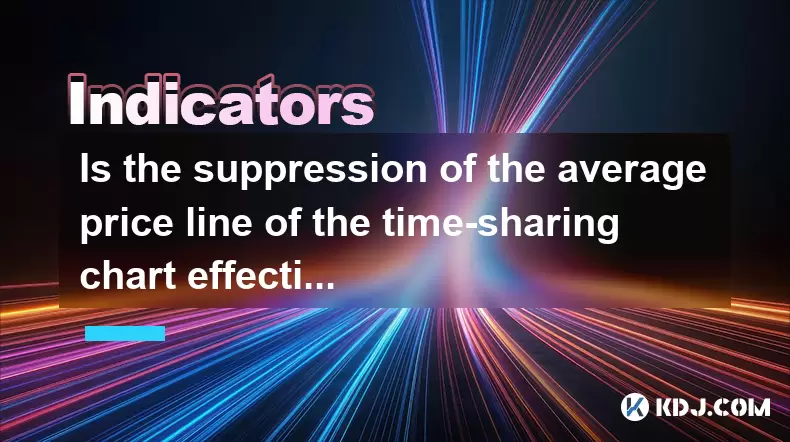
Understanding the Time-Sharing Chart and Average Price Line
In cryptocurrency trading, time-sharing charts are commonly used by traders to observe price fluctuations within a short time frame. These charts typically display price movements over intervals such as 1 minute, 5 minutes, or 15 minutes. Within these charts, many platforms offer an average price line, which is calculated based on the volume-weighted average price (VWAP) or simple moving averages.
The average price line acts as a dynamic support or resistance level. Traders often use it to determine whether the current price movement has enough momentum to break through this line. The concept of price suppression refers to situations where the price repeatedly touches the average line but fails to cross above or below it, suggesting strong resistance or support.
Why Traders Focus on the Average Price Line
Many traders believe that the average price line reflects market consensus. If the price consistently stays above this line, it indicates bullish sentiment; if it remains below, bearish dominance may be present. When the price approaches this line multiple times but fails to break through, it's seen as a sign of market hesitation or institutional control.
Traders also pay attention to volume patterns when assessing the effectiveness of the average price line. A high volume during a failed breakout attempt suggests strong selling or buying pressure at that level. Conversely, a low-volume touch might indicate a lack of interest, which could lead to a potential reversal.
How to Confirm a Breakthrough of the Average Price Line
Confirming a breakthrough of the average price line requires more than just a single candlestick crossing above or below it. Here are key steps to follow:
- Observe Multiple Touches: Before a breakthrough occurs, the price should have touched the average line multiple times without breaking through. This builds credibility for the level.
- Watch Volume Patterns: A valid breakout usually comes with a surge in volume. If the price moves past the line with increased volume, it confirms institutional participation.
- Check for Close Confirmation: Wait for the candlestick to close beyond the average line. Intraday wicks or shadows crossing the line are not sufficient.
- Analyze Price Action After the Breakout: After the price crosses the line, observe whether it holds as a new support or resistance. A retest that holds strengthens the validity of the breakout.
- Use Additional Indicators: Combine tools like RSI or MACD to confirm trend strength and avoid false signals.
Common Pitfalls in Interpreting the Average Price Line
One common mistake among novice traders is treating the average price line as a fixed support or resistance level like horizontal lines. However, since the average price line is dynamic, its position changes with every new data point. This makes it less reliable when used in isolation.
Another pitfall involves chasing breakouts too early. Many traders enter positions as soon as the price crosses the line, only to see it reverse quickly. Waiting for confirmation through candlestick closure and volume helps avoid premature entries.
Additionally, some traders ignore the context of the broader market. For example, during major news events or macroeconomic announcements, price behavior can become erratic, making the average price line less effective as a predictive tool.
Practical Examples of Breakthrough Confirmation
Let’s consider a scenario using Bitcoin's 15-minute chart. Suppose the average price line is at $62,000, and the price has tested this level three times in the last hour without breaking through. On the fourth attempt, the price surges above $62,000 with a strong green candle, and volume spikes significantly compared to previous candles.
Here’s how to analyze this situation step-by-step:
- First Check: Candle Closure: Ensure the candle closes above $62,000. If it does, proceed to next checks.
- Second Check: Volume Increase: Compare the volume of this candle to the average volume of the past five candles. If it's significantly higher, the breakout gains credibility.
- Third Check: Retest Behavior: Observe whether the price pulls back to $62,000 after the breakout. If it bounces off as support, the breakout is confirmed.
- Fourth Check: Indicator Confirmation: Use RSI to ensure it's not entering overbought territory too quickly, which could suggest a fakeout.
This methodical approach ensures that traders do not act impulsively and rely on objective criteria rather than subjective judgment.
Integrating the Average Price Line into Trading Strategies
For traders who want to integrate the average price line into their strategies, combining it with other tools enhances its reliability. For instance, pairing it with Fibonacci retracement levels can help identify key zones where price might stall or reverse.
Another strategy involves using the average price line as a trailing stop mechanism. As the line moves upward in a bullish trend, traders can adjust their stop-loss orders to follow the line, locking in profits while allowing room for natural price fluctuations.
Moreover, traders can set conditional orders based on the line’s position. For example, placing a buy order once the price closes above the line with specific volume conditions met can automate entry points and reduce emotional decision-making.
Frequently Asked Questions
Q: Can the average price line be customized?
Yes, many trading platforms allow users to adjust parameters such as period length or calculation method (e.g., VWAP vs. SMA). Customizing settings based on asset volatility and personal strategy can improve its effectiveness.
Q: Is the average price line suitable for all cryptocurrencies?
While applicable across various assets, its effectiveness may vary depending on liquidity. High-cap coins like BTC or ETH tend to respect the line more clearly due to stronger institutional activity and volume.
Q: Should I always wait for the candle to close before acting?
Yes, intraday price action can be misleading. Wicks often cross the average line temporarily, creating false signals. Waiting for the candle to close ensures greater accuracy.
Q: How often should I reassess the relevance of the average price line?
It’s recommended to review its performance after each major price move or market event. Adjustments may be needed when volatility increases or when the trend shifts direction.
Disclaimer:info@kdj.com
The information provided is not trading advice. kdj.com does not assume any responsibility for any investments made based on the information provided in this article. Cryptocurrencies are highly volatile and it is highly recommended that you invest with caution after thorough research!
If you believe that the content used on this website infringes your copyright, please contact us immediately (info@kdj.com) and we will delete it promptly.
- Score Big This Season with the BetMGM Bonus Code: Your Ticket to MLB Bonus Bets!
- 2025-07-24 06:50:12
- Bitcoin: From Digital Gold Rush to Evolving Asset Class
- 2025-07-24 06:50:12
- Shiba Inu's $1 Dream: Major Hurdles and Community-Driven Hope
- 2025-07-24 06:30:13
- Ethereum, Altcoins, and BlockDAG: Navigating the Crypto Landscape
- 2025-07-24 06:30:13
- Dogecoin's Resistance Retest: Parabolic Move on the Horizon?
- 2025-07-24 04:50:13
- WLFI, Vaulta Token, and Holdings: Navigating the Web3 Revolution
- 2025-07-24 05:30:13
Related knowledge
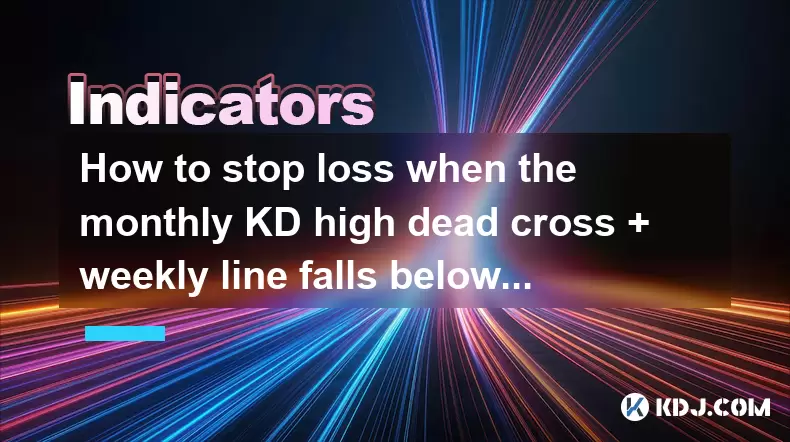
How to stop loss when the monthly KD high dead cross + weekly line falls below the 20-week line + daily line pulls back on the 5-day line?
Jul 24,2025 at 07:00am
Understanding the Indicators: KD, Weekly, and Daily Moving AveragesWhen traders analyze cryptocurrency price movements, they often rely on technical i...
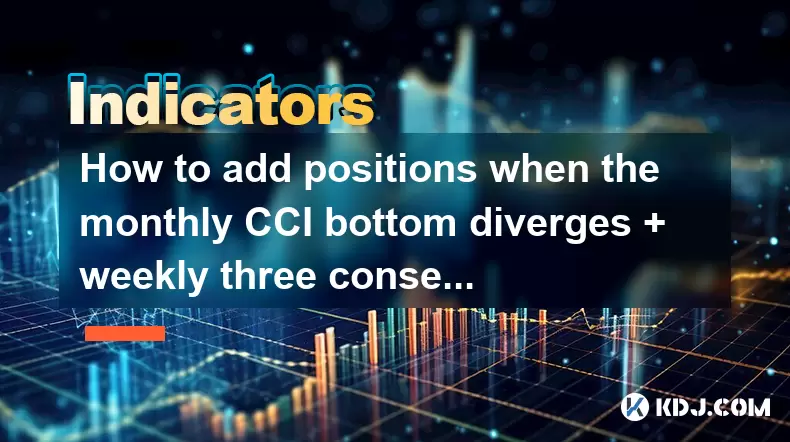
How to add positions when the monthly CCI bottom diverges + weekly three consecutive Yang + daily line gap is not filled?
Jul 24,2025 at 05:22am
Understanding the Monthly CCI Bottom DivergenceWhen analyzing the monthly CCI bottom divergence, traders are identifying a potential reversal signal i...
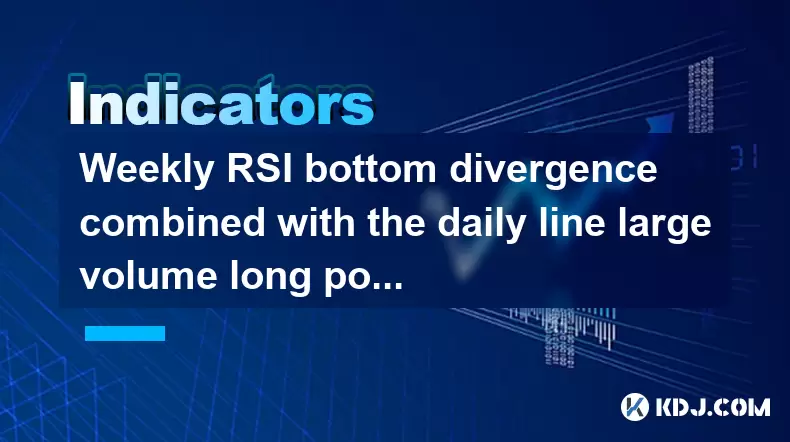
Weekly RSI bottom divergence combined with the daily line large volume long positive start signal
Jul 24,2025 at 05:28am
Understanding RSI Bottom Divergence in Cryptocurrency TradingIn the context of cryptocurrency trading, RSI bottom divergence is a powerful technical s...
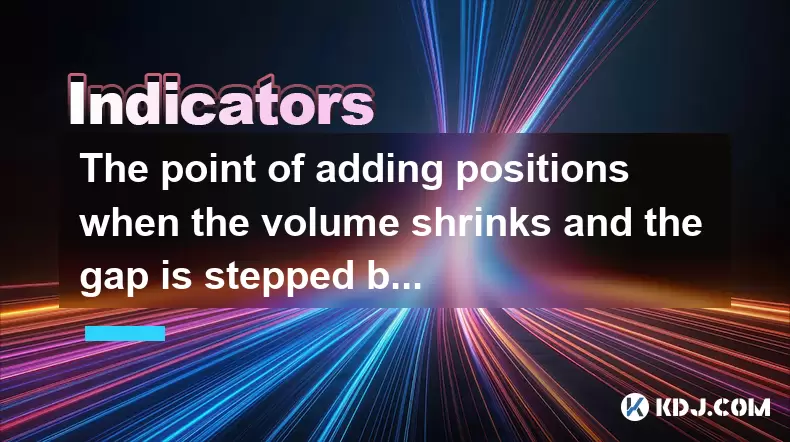
The point of adding positions when the volume shrinks and the gap is stepped back after the gap is jumped
Jul 24,2025 at 04:56am
Understanding the Gap Jump Phenomenon in Cryptocurrency TradingIn cryptocurrency trading, a gap jump occurs when the price of a digital asset opens si...
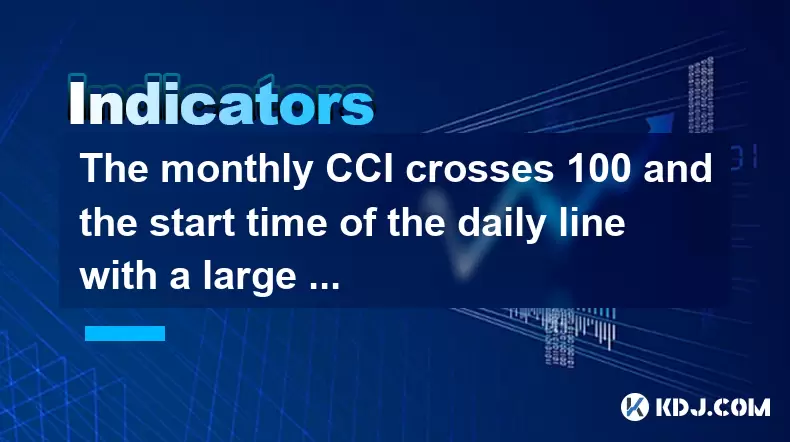
The monthly CCI crosses 100 and the start time of the daily line with a large volume positive line
Jul 24,2025 at 03:56am
Understanding the Monthly CCI Indicator and Its Significance at 100The Commodity Channel Index (CCI) is a momentum-based oscillator used to identify o...
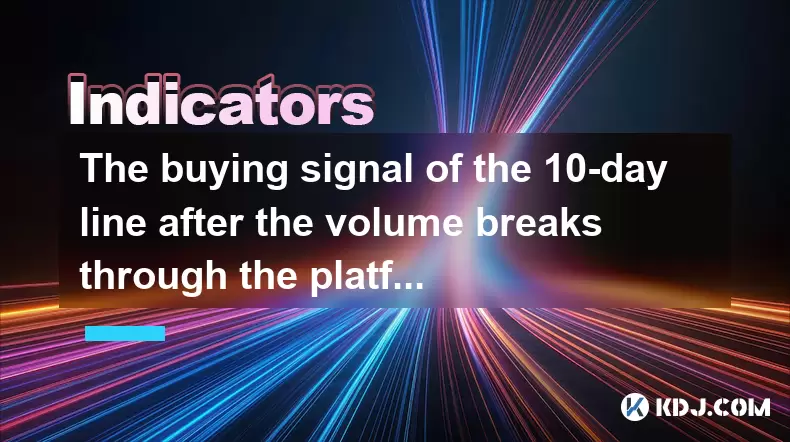
The buying signal of the 10-day line after the volume breaks through the platform
Jul 24,2025 at 06:00am
Understanding the 10-Day Moving Average in Cryptocurrency TradingIn cryptocurrency trading, moving averages are essential tools for identifying trends...

How to stop loss when the monthly KD high dead cross + weekly line falls below the 20-week line + daily line pulls back on the 5-day line?
Jul 24,2025 at 07:00am
Understanding the Indicators: KD, Weekly, and Daily Moving AveragesWhen traders analyze cryptocurrency price movements, they often rely on technical i...

How to add positions when the monthly CCI bottom diverges + weekly three consecutive Yang + daily line gap is not filled?
Jul 24,2025 at 05:22am
Understanding the Monthly CCI Bottom DivergenceWhen analyzing the monthly CCI bottom divergence, traders are identifying a potential reversal signal i...

Weekly RSI bottom divergence combined with the daily line large volume long positive start signal
Jul 24,2025 at 05:28am
Understanding RSI Bottom Divergence in Cryptocurrency TradingIn the context of cryptocurrency trading, RSI bottom divergence is a powerful technical s...

The point of adding positions when the volume shrinks and the gap is stepped back after the gap is jumped
Jul 24,2025 at 04:56am
Understanding the Gap Jump Phenomenon in Cryptocurrency TradingIn cryptocurrency trading, a gap jump occurs when the price of a digital asset opens si...

The monthly CCI crosses 100 and the start time of the daily line with a large volume positive line
Jul 24,2025 at 03:56am
Understanding the Monthly CCI Indicator and Its Significance at 100The Commodity Channel Index (CCI) is a momentum-based oscillator used to identify o...

The buying signal of the 10-day line after the volume breaks through the platform
Jul 24,2025 at 06:00am
Understanding the 10-Day Moving Average in Cryptocurrency TradingIn cryptocurrency trading, moving averages are essential tools for identifying trends...
See all articles

























































































